Bitcoin falls below $110,000, whose wallet is losing money again?
Market sentiment has fallen into extreme fear.
Market sentiment has fallen into extreme fear.
Written by: 1912212.eth, Foresight News
After the black swan crash on October 11, the market was generally concerned about a "second dip." Just a few days later, another sharp drop occurred. On October 17, bitcoin experienced four consecutive daily declines from its rebound high of $116,000, and at around 4 p.m. (UTC+8) today, it plunged to near $104,500, just a stone's throw from the October 11 crash low of $102,000. ETH was not spared either, dropping to $3,706, while SOL fell to around $175, with most altcoins experiencing widespread declines.
According to Coinglass data, in the past 24 hours, the total amount of liquidated open positions across the network reached $1.189 billions, with long positions accounting for $935 millions. The largest single liquidation occurred on Hyperliquid - ETH-USD, valued at $20.4274 millions. Data from alternative shows that the current market fear index has dropped to 22, entering a state of extreme fear.
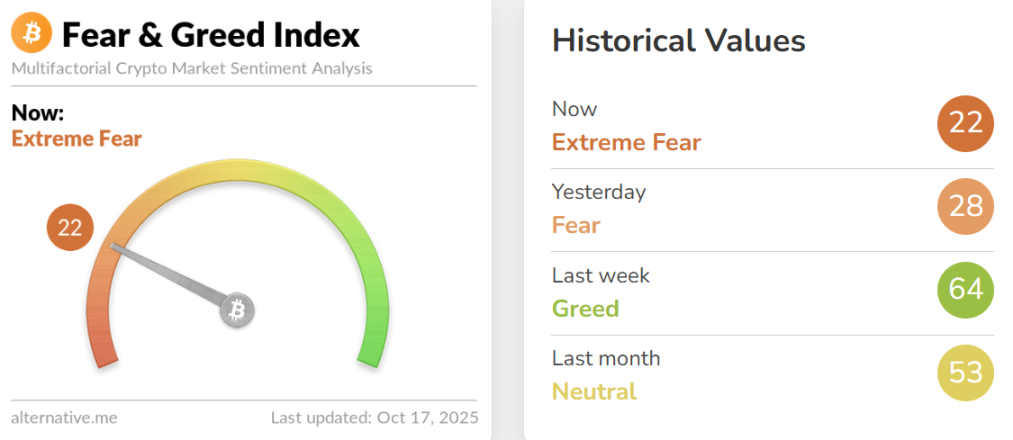
Significant Net Outflows from US BTC and ETH Spot ETFs
Since the crash, US BTC spot ETF data has shown significant net outflows. From October 10 to October 16, only October 14 recorded a net inflow of $102.58 millions, while all other days saw net outflows. Notably, the net outflow on October 1 exceeded $536 millions, marking a new low since August this year.
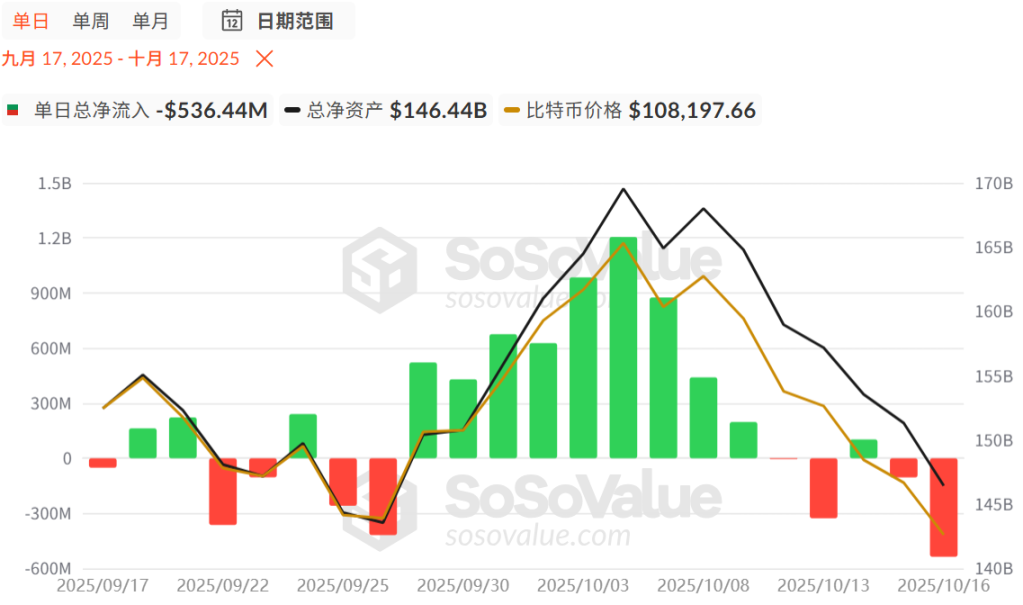
The outlook for Ethereum spot ETFs is equally pessimistic, with large net outflows occurring continuously since October 9. On October 13 alone, the net outflow exceeded $428 millions, setting a new high for net outflows since September this year.
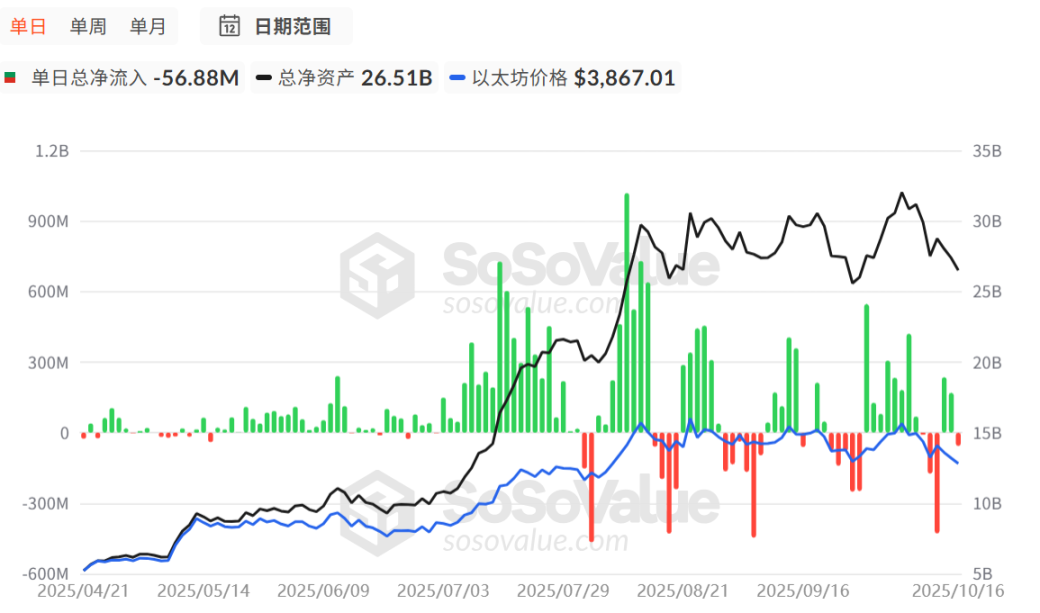
The Crash Has Weakened Market Confidence
DeFiance Capital, which gained fame in the last cycle by betting on multiple DeFi projects, suffered losses in this crash. On October 14, its founder Arthur posted on social media, "We are fine. The fund experienced some losses, but it doesn't rank among our top five days of profit and loss volatility. I am just extremely angry and disappointed. This crash has set the entire crypto sector back significantly, especially for the altcoin market, as most price discovery happens on offshore CEXs."

He even pessimistically believes that this crash marks the end of the crypto era.
The previously hyped treasury DAT trend has also fizzled out. Tom Lee, chairman of BitMine, the largest Ethereum holding institution, stated that this bubble may have already burst.
Previously, US Nasdaq-listed company QMMM Holdings announced on September 9, 2025, that it planned to spend $100 millions to establish a cryptocurrency reserve, with its stock price rising 9.6 times in three weeks. At the end of September, the US Securities and Exchange Commission (SEC) believed the company was suspected of manipulating its stock price via social platforms and ordered its suspension from trading starting September 29. The company has remained suspended since then. On October 16, Caixin visited its Hong Kong headquarters and found the office deserted. When inquiring with employees of another nearby company, they said QMMM had moved out in September, but they did not know its new location.
In response, Changpeng Zhao commented, "All crypto treasury (DAT) companies should use third-party crypto custodians and have account setups audited by investors."
US Small Banks Hit by Scandals, Market Rushes to Sell
Zions Bancorp and Western Alliance Bancorp, two US regional banks, disclosed on Thursday that they suffered losses due to fraud involving bad commercial mortgage investment funds. Although the scale of losses was relatively small compared to recent other credit blowups—only involving tens of millions of dollars—the market reaction was unusually severe.
The German DAX index fell 2.13%, the UK FTSE 100 index dropped 1.6%, the Nikkei 225 index declined 1.44%, the Australian S&P/ASX 200 index fell 0.81%, and all three major US stock index futures were down.
Panic spread rapidly, dragging down the entire banking sector. The total market value of 74 major US banks lost over $100 billions in a single day.
This "sell first, ask questions later" mentality spread quickly. JPMorgan analysts Anthony Elian and Michael Pietrini noted in a report that they also questioned "why all these credit 'isolated incidents' seem to be happening in such a short period." However, the sell-off did not spare large bank stocks, with Citigroup and Bank of America both falling more than 3%.
The 2023 US banking crisis also once triggered a significant correction in the crypto market.
Will the Market Turn Bearish Next?
Chris Burniske, partner at Placeholder VC, posted, "I'm increasingly convinced that last Friday's crash has left the crypto market stagnant in the short term. After such a collapse, it's hard to quickly form sustained buying. This cycle has been disappointing for most people, which may limit action as everyone waits for the market to warm up or for previous historical highs. It's easy to get caught up in chart minutiae, but if you look at the monthly charts for BTC and ETH, it shows we're still in a high range (though there are cracks), if you're considering taking profits."
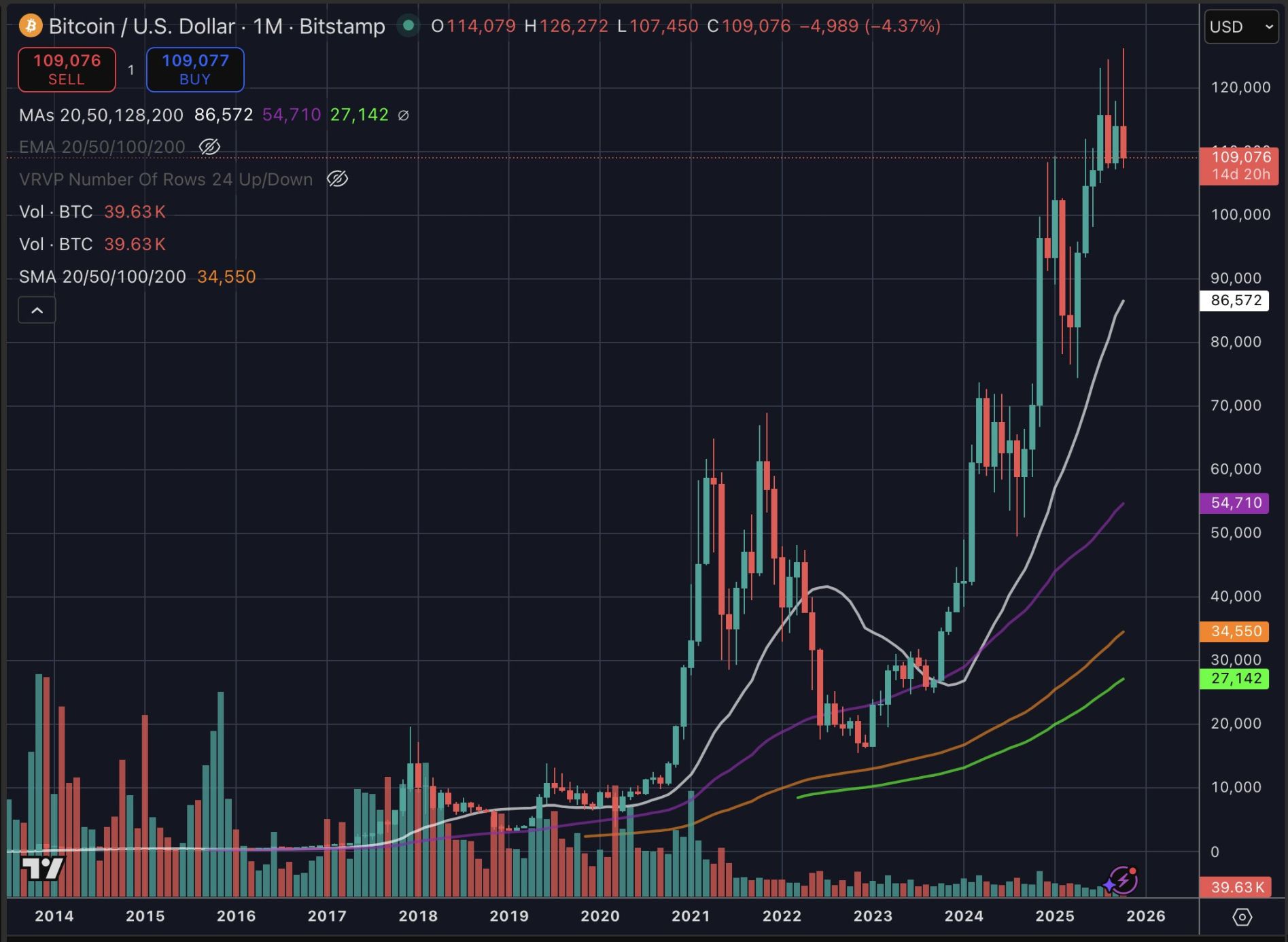
"MSTR is declining, gold is sending warnings, so is the credit market, and stocks will be the last to react. We can always expect a weak rebound, but I've already taken action (remember, cashing out is never all or nothing). I'll be watching BTC's reaction to $100,000, but if BTC reaches $75,000 or lower, I might become interested in the market again. This bull run is different from previous ones, and the next bear market will be different too."
McKenna, partner at Arete Capital, stated that the market is in the process of forming a bottom, which will take 40-60 days to establish. All price action during this interval is just choppy consolidation. "By mid-November, we should start to expect constructive results and look forward to a positive December and Q1 2026."
glassnode tweeted that bitcoin is currently at a key support range, with the price below the 200-day moving average ($107,400) and just above the 365-day moving average ($99,900), while also facing resistance from the 111-day moving average ($114,700) above.
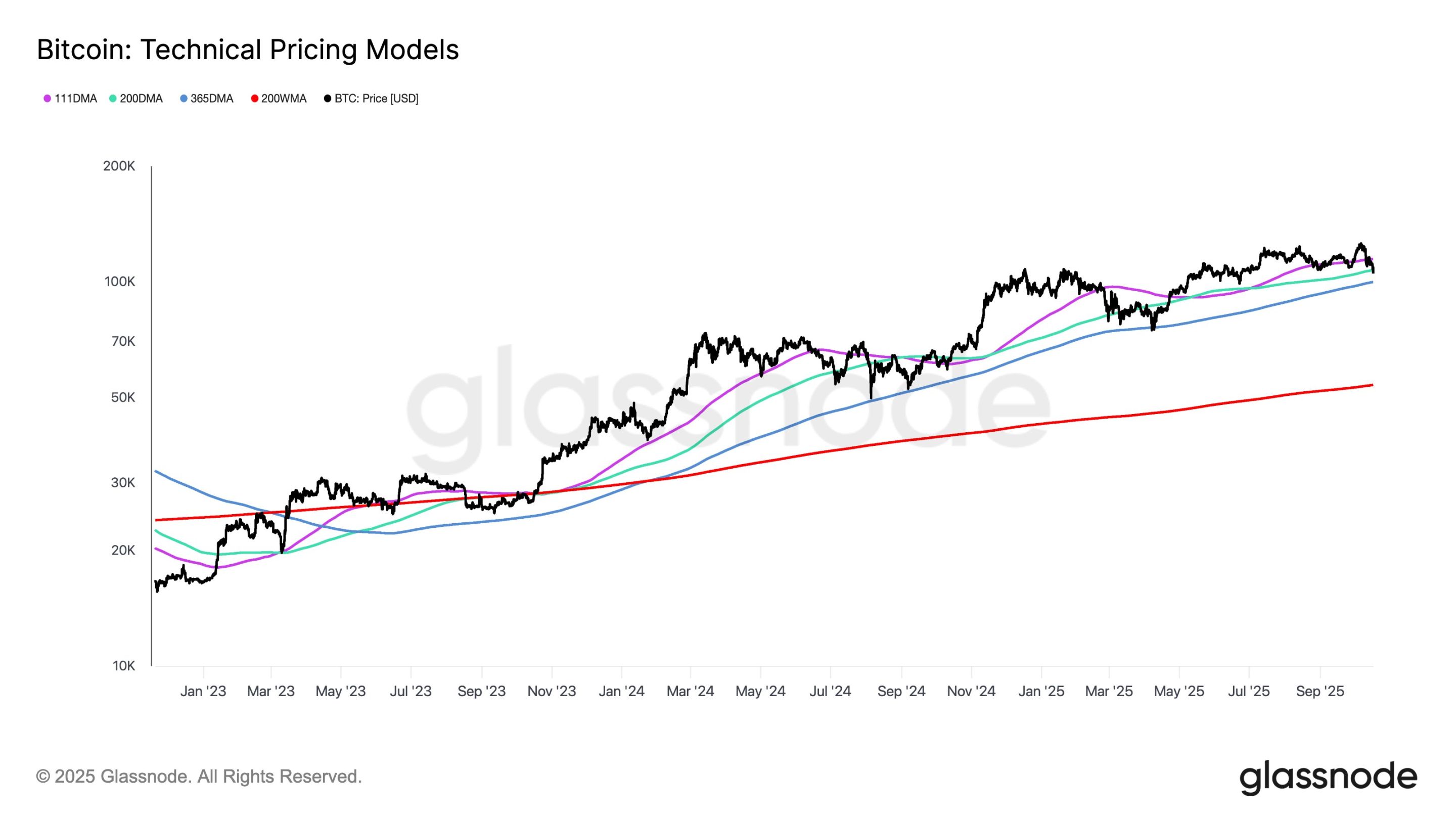
If the 365-day moving average can hold, the trend may stabilize; but if it breaks below this level, there could be a risk of a deeper correction.
Disclaimer: The content of this article solely reflects the author's opinion and does not represent the platform in any capacity. This article is not intended to serve as a reference for making investment decisions.
You may also like
Enemies reconciled? CZ and former employees join forces to launch prediction platform predict.fun
Dingaling, who was previously criticized by CZ due to the failure of boop.fun and the "front-running" controversy, has now reconciled with CZ and jointly launched a new prediction platform, predict.fun.

Why is it said that prediction markets are really not gambling platforms?
The fundamental difference between prediction markets and gambling lies not in gameplay, but in mechanisms, participants, purposes, and regulatory logic—the capital is betting on the next generation of "event derivatives markets," not simply rebranded gambling.

2025 Crypto Prediction Mega Review: What Nailed It and What Noped It?
Has a year passed already? Have those predictions from back then all come true?

Incubator MEETLabs launches large-scale 3D fishing blockchain game "DeFishing" today
As the first blockchain game on the GamingFi platform, a dual-token P2E system is implemented using the IDOL token and the platform token GFT.

